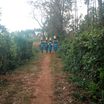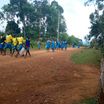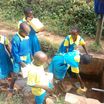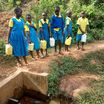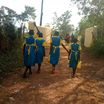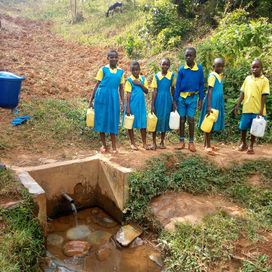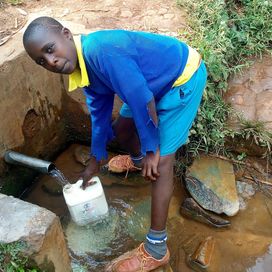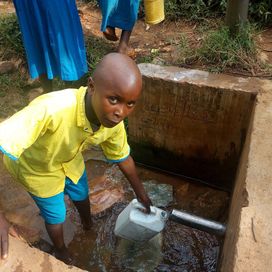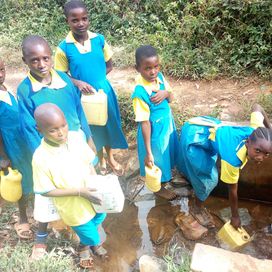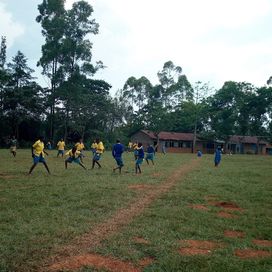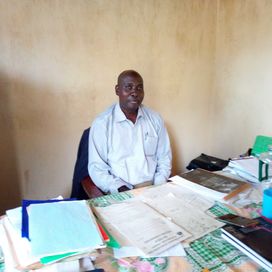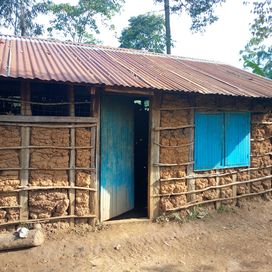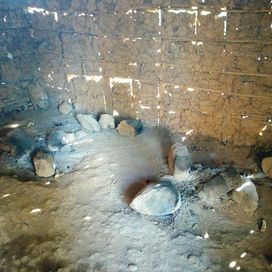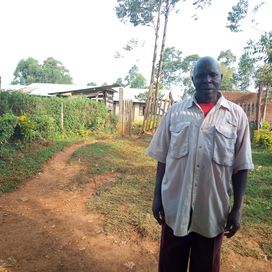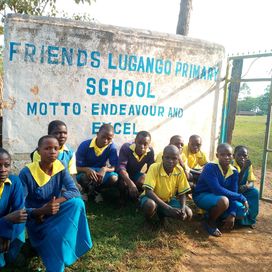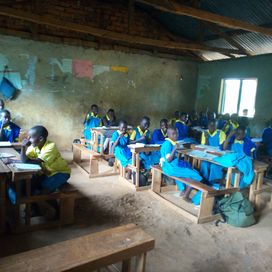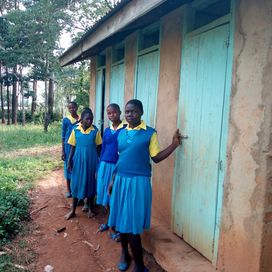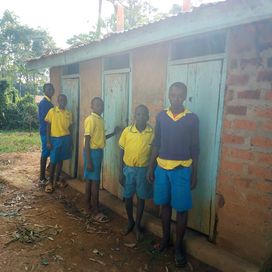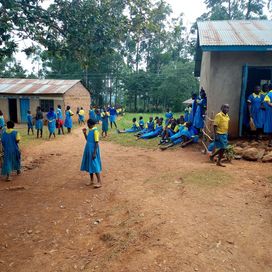Project
Lugango Primary School
Project Complete!
Lugango Primary School is located in Shamakhanga Village of Kakamega County, Kenya. It currently has a student enrollment of 510. It employs 15 teachers and three support staff.
The headteacher and oldest students arrive much earlier than the rest, by 6am every morning. They attend a study hall together that’s meant to prepare them for final exams. Students then work together to complete assigned chores like sweeping and picking up litter. Normal classes stretch throughout the day with an hour’s lunch in the middle. Games are played in the evening before dismissal.
Most of the students attending here either don’t have adults in their homes, or their grandparents are the breadwinners. This forces many of the students, especially boys, to hunt through the local vegetation to find common herbs to sell and make a living for themselves during market days.
The headteacher and oldest students arrive much earlier than the rest, by 6am every morning. They attend a study hall together that’s meant to prepare them for final exams. Students then work together to complete assigned chores like sweeping and picking up litter. Normal classes stretch throughout the day with an hour’s lunch in the middle. Games are played in the evening before dismissal.
Most of the students attending here either don’t have adults in their homes, or their grandparents are the breadwinners. This forces many of the students, especially boys, to hunt through the local vegetation to find common herbs to sell and make a living for themselves during market days.
Water
There is no reliable water on school grounds. When the school opened, it was connected to a local pipeline that turns out to not be much help at all; half the time when the students or staff turn the faucet, no water comes out.
So, students have to go out into the community during class breaks to find the water they need for drinking. If they didn’t have enough water to clean their classrooms and the latrines in the morning before classes, they have to gather enough water throughout the day to clean after dismissal. There’s also a school kitchen that cooks lunch for the oldest students and staff, which needs to have enough water too.
“Most of my pupils miss school, and the report is usually the same – that they have severe stomachaches accompanied by diarrhea. These are clear indications of water-related diseases,” Headteacher Mr. Shikondi said.
“The teachers on weekly duties usually supervise morning and evening cleaning, although the challenge remains on water, as the students use any water for cleaning, but washing hands and drinking becomes difficult, thus the health of the pupils is usually at risk!”
Sanitation
There are not enough latrines for the students to use. Many of these are in poor condition, and there are some that the students have written off entirely, fearing that they’ll collapse while in use. There is only one handwashing station for 510 students, so the majority doesn’t have a chance to clean up before heading back to class.
There is no reliable water on school grounds. When the school opened, it was connected to a local pipeline that turns out to not be much help at all; half the time when the students or staff turn the faucet, no water comes out.
So, students have to go out into the community during class breaks to find the water they need for drinking. If they didn’t have enough water to clean their classrooms and the latrines in the morning before classes, they have to gather enough water throughout the day to clean after dismissal. There’s also a school kitchen that cooks lunch for the oldest students and staff, which needs to have enough water too.
“Most of my pupils miss school, and the report is usually the same – that they have severe stomachaches accompanied by diarrhea. These are clear indications of water-related diseases,” Headteacher Mr. Shikondi said.
“The teachers on weekly duties usually supervise morning and evening cleaning, although the challenge remains on water, as the students use any water for cleaning, but washing hands and drinking becomes difficult, thus the health of the pupils is usually at risk!”
Sanitation
There are not enough latrines for the students to use. Many of these are in poor condition, and there are some that the students have written off entirely, fearing that they’ll collapse while in use. There is only one handwashing station for 510 students, so the majority doesn’t have a chance to clean up before heading back to class.
Here's what your support will do
Training
Training will be held for two days. The facilitator will use PHAST (participatory hygiene and sanitation transformation), ABCD (asset-based community development), CTC (child to child), lectures, group discussions, and handouts to teach health topics and ways to promote good practices within the school. The CTC method will prepare students to lead other students into healthy habits, as well as kickstart a CTC club for the school.
Handwashing Stations
This CTC club will oversee the new facilities, such as handwashing stations, and make sure they are kept clean and in working condition. The two handwashing stations will be delivered to the school, and the club will fill them with water on a daily basis and make sure there is always a cleaning agent such as soap or ash.
VIP Latrines
Two triple-door latrines will be constructed with local materials that the school will help gather. And with a new source of water on school grounds, students and staff should have enough to keep these new latrines clean.
Rainwater Catchment Tank
A 50,000-liter rainwater catchment tank will help alleviate the water crisis at this school. The school will also help gather the needed materials such as sand, rocks, and water from the spring for mixing cement. Once finished, this tank can begin catching rainfall that will be used by the school’s students and staff.
We and the school strongly believe that with this assistance, standards will significantly improve. These higher standards will translate to better academic performance!
Training
Training will be held for two days. The facilitator will use PHAST (participatory hygiene and sanitation transformation), ABCD (asset-based community development), CTC (child to child), lectures, group discussions, and handouts to teach health topics and ways to promote good practices within the school. The CTC method will prepare students to lead other students into healthy habits, as well as kickstart a CTC club for the school.
Handwashing Stations
This CTC club will oversee the new facilities, such as handwashing stations, and make sure they are kept clean and in working condition. The two handwashing stations will be delivered to the school, and the club will fill them with water on a daily basis and make sure there is always a cleaning agent such as soap or ash.
VIP Latrines
Two triple-door latrines will be constructed with local materials that the school will help gather. And with a new source of water on school grounds, students and staff should have enough to keep these new latrines clean.
Rainwater Catchment Tank
A 50,000-liter rainwater catchment tank will help alleviate the water crisis at this school. The school will also help gather the needed materials such as sand, rocks, and water from the spring for mixing cement. Once finished, this tank can begin catching rainfall that will be used by the school’s students and staff.
We and the school strongly believe that with this assistance, standards will significantly improve. These higher standards will translate to better academic performance!
0.18745 latitude, 34.798732 longitude
H2O for Life is not a WASH (water, sanitation and hygiene) project implementer. We have partnerships with non-governmental organizations (NGOs) implementing WASH in Schools projects around the world. Our NGO partners match funds needed for each school project. We also have a generous donor that provides us with an interest-free loan that, along with matching funds, allows for many projects to be started or possibly even completed before total funds have been raised. In rare situations we reserve the right to reallocate funds to alternate project(s).
Questions? Ask us at 651-756-7577 or info@h2oforlifeschools.org.
July 23, 2019
Lugango Project Complete
There is a new rainwater catchment system at Lugango Primary School! Students have a source of safe, clean water thanks to your support. Handwashing stations were installed so that students...

